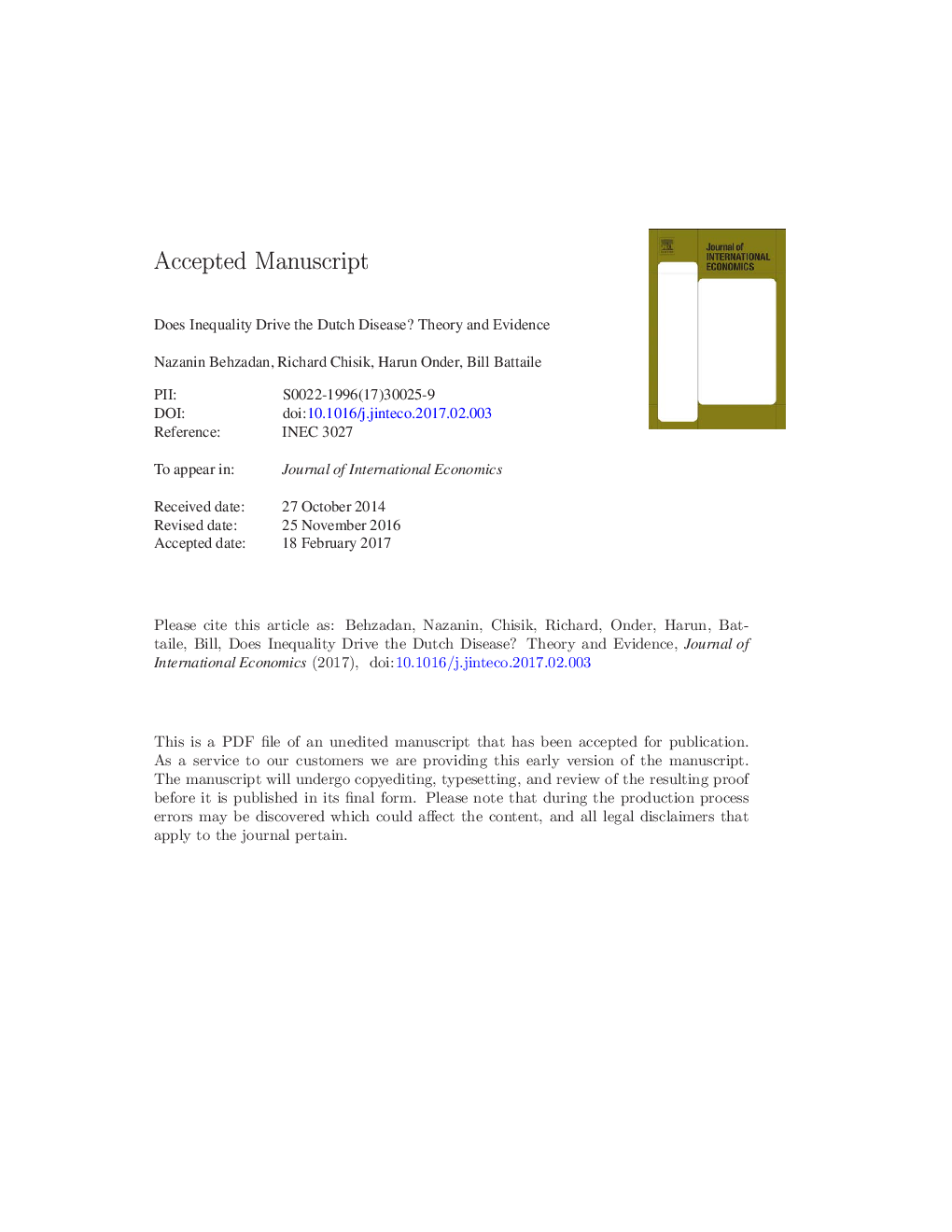| Article ID | Journal | Published Year | Pages | File Type |
|---|---|---|---|---|
| 5100936 | Journal of International Economics | 2017 | 40 Pages |
Abstract
In this paper we show that the Dutch disease can arise solely from inequality in the distribution of natural resource rents. Given two otherwise identical countries that differ only in the ownership shares of the natural resource rents, the country with the less equal distribution will have less production of manufacturing goods and less development of learning-by-doing in this sector. As opposed to conventional models, where income distribution has no effect on economic outcomes, an unequal distribution of the resource wealth can generate the Dutch disease dynamics even in countries with an initial comparative advantage in manufacturing. We also provide a range of empirical tests of our model, including both difference and system GMM estimators in a dynamic panel. To disentangle the effects of inequality and institutional quality we purge our inequality measure of any linear or higher order correlations with institutional quality and repeat our system and difference GMM estimations. Our empirical analysis supports the hypothesis that inequality indeed plays a significant role in whether being resource-rich is a blessing or a curse for a country. The more unequal is the distribution of natural resource rents, the stronger is the disease.
Related Topics
Social Sciences and Humanities
Economics, Econometrics and Finance
Economics and Econometrics
Authors
Nazanin Behzadan, Richard Chisik, Harun Onder, Bill Battaile,
